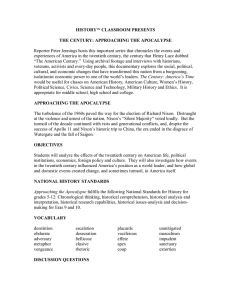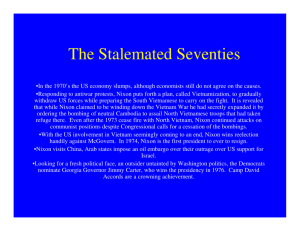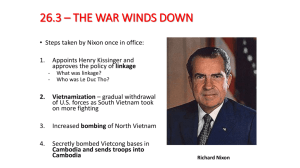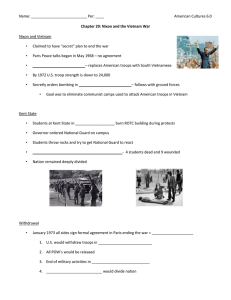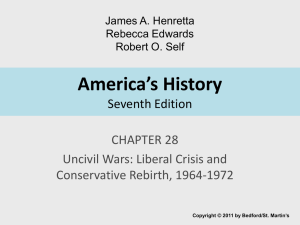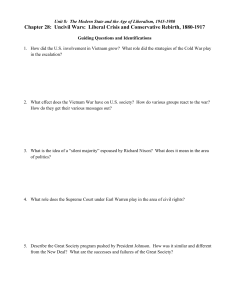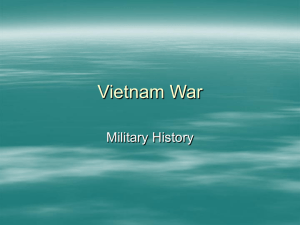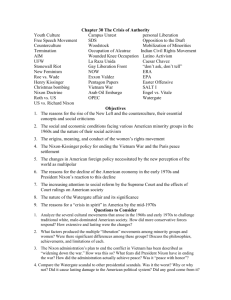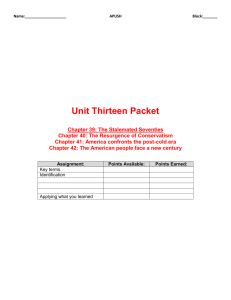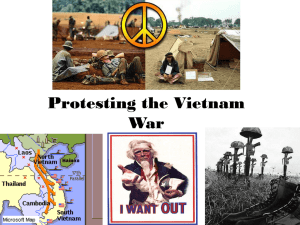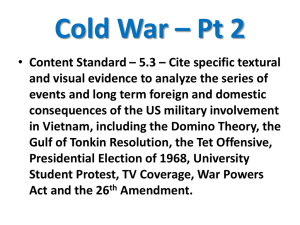The War Winds Down Notes
advertisement
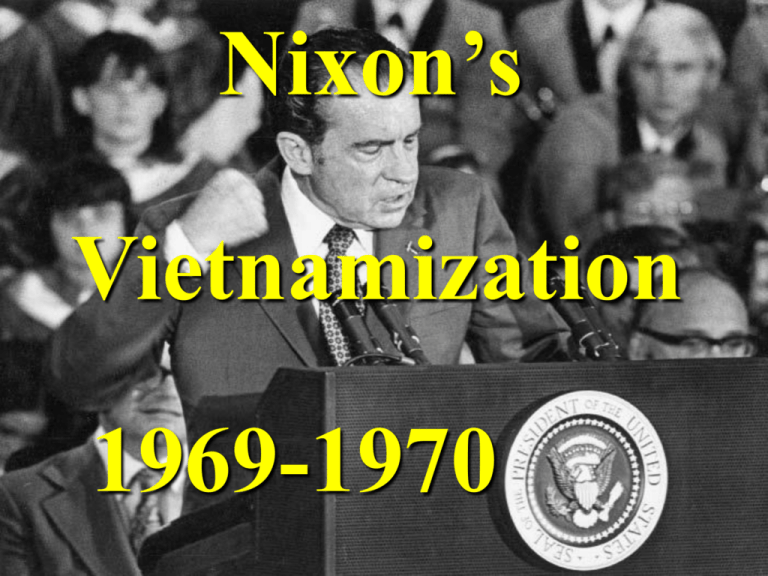
Nixon’s Vietnamization 1969-1970 “Peace with Honor” Part of Nixon’s endthe-war plan was called Vietnamization. It involved turning over the fighting to the South Vietnamese as U.S. troops were gradually pulled out. This strategy, said Nixon, would bring “peace with honor.” Nixon hoped to maintain U.S. dignity in the face of its withdrawal from war. Invasion of Cambodia Publicly, Nixon emphasized Vietnamization: secretly, however, he planned to widen the war--into Cambodia. For years, North Vietnamese troops had attacked South Vietnam, then retreated to the safety of camps in neutral Cambodia. Early in 1969, Nixon decided to conduct a secret campaign to bomb these positions. Violence on Campus News of the bombing and invasion of Cambodia provoked outrage in the U.S., particularly on college campuses. On May 4, 1970, four people were killed at a Kent State University demonstration. Pentagon Papers In 1971, another incident sparked the antiwar movement. The New York Times began publishing a collection of secret government documents relating to the war. Known as the Pentagon Papers, they showed that the government had frequently misled the American people about the course of the war. Daniel Ellsberg No More Will To Fight 1971-1975 Lost Cause Throughout the war, American soldiers had fought well. But as the U.S. presence fell to 140,000, few wanted to die for a cause that seemed to have lost its meaning. By the end of 1971, four times as many Americans soldiers required treatment for serious drug abuse as required medical attention for combat wounds. A Cease-Fire At Last On January 27, 1973, a peace agreement was signed. The last U.S. ground forces were withdrawn on March 29. And soon after, Congress passed a bill blocking any further U.S. military activity in Indochina. POW’S Lieutenant Colonel Robert Stirm, a returning POW, receives a warm welcome from his family in 1973. The longest-held Vietnam POW was Lieutenant Everett Alvarez, Jr., of California. He was imprisoned for more than eight years. On April 30, 1975, full columns of NVA soldiers entered Saigon. As the last Americans in Vietnam scrambled aboard any aircraft they could claw their way onto, the Communists that the U.S. spent two decades fighting finally succeeded in freeing Vietnam of foreigners Fall of Saigon The Legacy of Vietnam *More than 58,000 killed, 300,000 wounded and 2,300 missing and presumed dead *More cautious outlook on foreign affairs– Vietnam Syndrome *More cynical about the government *Anti-war demonstrations resulted in violence and even death *Policy changes were made, such as the War Powers Act and abolition of the draft

